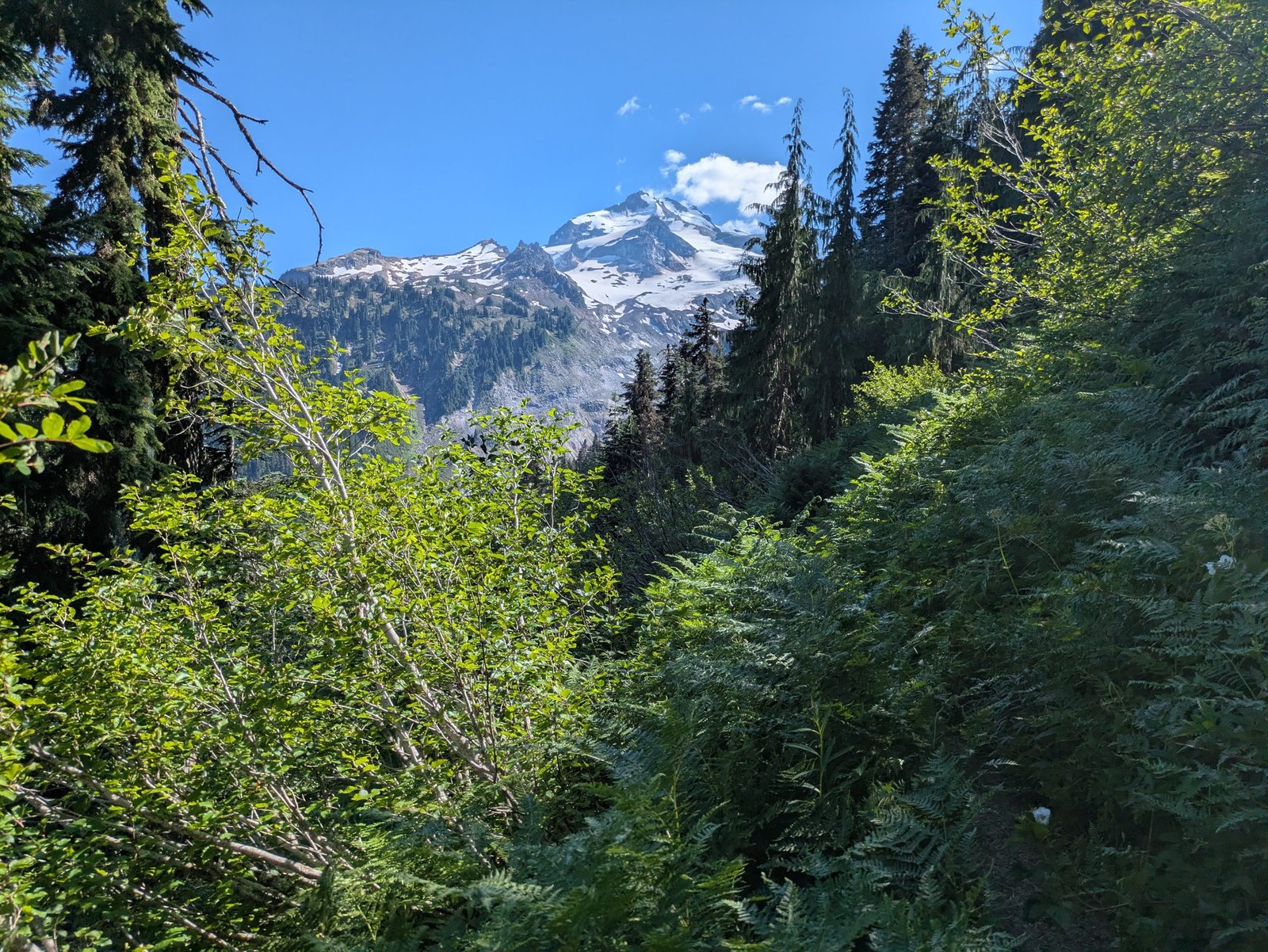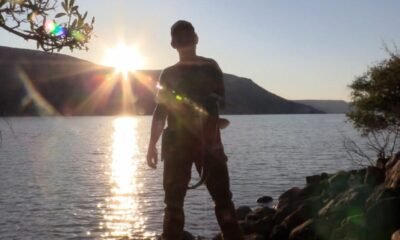Destinations & Things To Do
6 Things We’re Dying to Know About Ultramarathoners

It’s ultrarunning season, and people around the world are stepping out to do the impossible. Fifty miles feels like a lot, but hey why not double it? These mammoths of mileage have unlocked a new level of human potential, but as heroic as their achievements may be, there is still so much mystery when it comes to going the distance.
After careful consideration, we’ve put together six questions that we want to ask an ultramarathoner but have been too afraid to pursue. Hey folks, there are just some things we need to know.
1. Do You Have Toenails?
Long runs over uneven, rocky trail comes with its share of foot issues, but few sacrifices are greater than those poor keratin creatures attached to your precious foot fingers. Give us the in-shoe scoop: How many of those bad boys do you lose every race and how quick do they grow back? For many ultramarathoners, this seems to be par for the racecourse, but is there a way to strengthen your nails for another round? Anyone out there taking them out for good?
2. What’s Your Nip Game?
Maximum mileage spells a whole lot of extra friction in those exposed places. For most racers, nipples bear the brunt of it, channeling chafage on a level us normal mile loggers can’t fully grasp. So how do you prepare for this inevitable rub fest? Are we talking bandages, tape, Vaseline, or something even burlier? When it comes to nipple chafing, are some shirts better than others? How about no shirts? We feel for your chesticles, we really do.
3. Where Does Your Mind Wander?
You’ve got 100 miles (or more) ahead of you—that’s a lot of think time. What are you thinking about? Do you keep it reigned in or let it roam? Counting steps seems like a miserable endeavor, so are there other ways to pass that time instead of one foot in front of the other? It also seems like some prime time for developing a few really hot takes or solving some of the world’s pressing problems. Give it to us. We need answers!
4. Poo in the Shoe
We’ve all seen the photos: that trickle of not-so-mysterious brown snaking down your leg at mile 75. Poop happens, especially over 100 miles of body-jostling, calorie-evaporating singletrack. So, what goes down when that tummy starts to rumble? Do you have a poo plan? What’s the strategy when the time is now and your next aid station is miles away? Are there any unwritten rules for in-race relief?
5. Your Best Kept Vest Secret
There are only so many power gels in the world; what’s an item that makes your running vest unique? Are you bringing trails snacks for your furry mountain friends? A little extra Bag Balm for the undercarriage? Crystals for energetic intervention? We’re all built a little different, but what’s the secret pocket treasure that gives you a leg up?
6. Do You Ever Fall Asleep Running?
Serious question! The combination of fatigue, meditation, and sheer time on the trail makes for one heck of a backcountry lullaby. Do you ever just…nod off while running? When things get a little sleepy, what are the best ways to keep your race on track? We’re aware of the hallucinations and tears, but sometimes being tired goes even further. Are the sleepy scaries ever too much?
Destinations & Things To Do
Scientists Reveal That Lonesome Lake Is Full of Poop

Last fall, scientists from the Environmental Protection Agency (EPA) revealed that a popular lake in Wyoming’s Wind River Range is contaminated with human feces. And not just contaminated, but the most heavily contaminated lake out of nearly 1,000 lakes surveyed across the United States.
Look up a picture of Lonesome Lake, and you may be surprised. It doesn’t look like a biohazard. At first glance, it seems like paradise. The alpine lake sits at around 10,000 feet in elevation, and is ringed by the Cirque of the Towers—a picturesque semi-circle of 12,000-foot granite spires that has long enchanted rock climbers and trekkers alike. It’s also a stone’s throw from the Continental Divide Trail and a common stopping point for long-distance hikers. As a result, it is among the most heavily-trafficked backpacking destinations in the region. During peak season in August, as many as 400 hikers may visit the Cirque of the Towers each week.
In the spring of 2022, as part of the EPA’s National Lakes Assessment, the agency collected samples of water from 981 lakes around the country, including Lonesome. The results, published last fall, show that Lonesome Lake contains 490,895 calibrator cell equivalents of the bacteria genus Enterococci for every 100 milliliters of water, the highest of any lake tested. The EPA’s safe limit for swimming—not just drinking, mind you, but swimming—is 1,280 per 100 milliliters, meaning the contamination in Lonesome Lake is a jaw-dropping 384 times higher than the recommended limit.
As noted by local nonprofit news outlet WyoFile, “Arguably, Lonesome Lake was the most spectacular, remote waterbody in the broad study examining lake health all around the United States … and yet the data also suggested that Lonesome Lake’s water was the most polluted by poop. That’s especially remarkable given that the assessment also looked at lakes and ponds in urban areas and agricultural regions more typically associated with feces-related pollution.”
It’s worth noting that high concentrations of Enterococci do not necessarily equate one-to-one to high concentrations of feces. Researchers say more work still needs to be done. “A single datapoint doesn’t necessarily tell us much of anything,” the DEQ’s Ron Steg told WyoFile. “We need to get some real data to understand if there is a problem. If there is, we’ll react to the results of the data.”
Enterococci is intestinal bacteria, and thus its presence in a water supply is a strong indicator of fecal contamination. The sampling at Lonesome was conducted through the Wyoming Department of Environmental Quality (DEQ), and when the results came in last fall, researchers from the DEQ and U.S. Forest Service went out to take additional samples at the lake, this time searching for another indicator of fecal contamination, Escherichia coli, but came up with nothing. Over the next two months, scientists plan to take more samples at Lonesome Lake and nearby Big Sandy Lake, another popular trekking destination, to get a more definitive picture of the degree of contamination.
But to those in the know, the study results come as no surprise. “I tell people definitely do not swim in there, I tell people definitely do not drink the water,” Brian Cromack, a local outdoor gear shop employee, told WyoFile. “It’s been heavily contaminated for a long time, just via the negligence of outdoor recreation enthusiasts over the years.”
Although they may look pristine, alpine lakes surrounded by granite peaks like the Winds can face higher levels of contamination, because the non-porous granite and thin soil create a “bathtub effect,” offering no natural filtration for water. This, combined with the steep gradients, means that rain and snowmelt quickly wash fecal matter—not just from humans, but from dogs and natural wildlife—from the surrounding slopes down into the low-lying lakes. This problem peaks during spring thaw, when months of waste frozen in snowpack are often flushed into the water all at once, coinciding with peak visitation periods in the summer. At high elevations, cold water temperatures also allow dangerous pathogens like Giardia and E. coli to survive for longer periods.
It remains to be seen what the follow-up studies will reveal at Lonesome Lake, or what is to be done about it. Other high-traffic wilderness locales, like California’s Mount Whitney Zone, now require all visitors to pack their waste out in a “wag bag.” Currently there is no specific stipulation on how to dispose of bodily waste in the Cirque of the Towers, aside from following basic Leave No Trace principles—bury waste in a hole six inches deep, 200 feet from trails and water sources. But research is increasingly indicating that, taking into account the growing number of people recreating in the wilderness, these practices actually are no longer enough to prevent fecal contamination.
Destinations & Things To Do
15 most overcrowded tourist destinations revealed

Birds of a feather flock together.
Since most people travel during the summer season, some of the world’s most beautiful destinations are also its most overcrowded.
A new ranking by Go2Africa has revealed the top 15 most overcrowded tourist destinations in the world — where the number of visitors dramatically outweighs the local population.
It highlights a growing global trend: picturesque destinations are feeling the strain of overtourism.
As travel rebounds worldwide, congestion of tourists raises questions about sustainability, local impact and the delicate balance between welcome and overwhelm.
To figure out which countries made this list, Go2Africa compared each country’s total number of visitors per year to its population data by analyzing tourism figures from national tourist boards and reports.
Their findings revealed that Vatican City — the world’s smallest country by both area and population — tops the list. Despite the population of this sovereign city-state within Rome, Italy being only 882 residents, the spiritual heart of Catholicism welcomes an astounding 6.8 million tourists annually.
That equates to a staggering 7,709.75 visitors for every local — a clear reflection of the city-state’s immense religious and historical draw.
Nestled in the Pyrenees between France and Spain, the mountainous principality of Andorra takes second place.
Best known for its ski resorts and tax-free shopping, this Southwestern European country sees around 9.6 million tourists each year. With a population of just under 82,000, that means there are 117.16 tourists for every resident.
Another European mountainous microstate, San Marino, ranks third. With only 33,581 residents, it attracts 2 million tourists annually.
Known for its medieval architecture and scenic hilltop views, San Marino hosts 59.56 tourists per local.
In fourth place is the Bahamas, a sun-soaked Caribbean paradise. Although home to just over 400,000 people, the island nation welcomes more than 11.2 million visitors each year — equivalent to 27.96 tourists per resident.
Its crystal-clear waters and sandy beaches remain a major pull for international travelers.
The tropical Caribbean country, Saint Kitts and Nevis, rounded out the top five. It has a population of 46,843 and draws in 875,085 visitors annually. The dual-island nation sees 18.68 tourists per resident. Its lush scenery and tranquil beaches have made it a celebrity favorite — most famously with Princess Diana.
These findings highlight the growing impact of tourism not just on infrastructure, but also on local communities.
While scenic and culturally rich destinations remain irresistible to global travelers, the figures reveal the need for sustainable tourism strategies to preserve these special places for generations to come.
The top 15 most overcrowded travel destinations:
1. Vatican City
Local population: 882
Tourists per year: 6,800,000
2. Andorra
Local population: 81,938
Tourists per year: 9,600,000
3. San Marino
Local population: 33,581
Tourists per year: 2,000,000
4. Bahamas
Local population: 401,283
Tourists per year: 11,220,000
5. Saint Kitts and Nevis
Local population: 46,843
Tourists per year: 875,085
6. Antigua and Barbuda
Local population: 93,772
Tourists per year: 1,154,236
7. Bahrain
Local population: 1,607,049
Tourists per year: 14,900,000
8. Monaco
Local population: 38,956
Tourists per year: 340,000
9. Malta
Local population: 563,443
Tourists per year: 3,563,618
10. Hong Kong
Local population: 7,414,909
Tourists per year: 44,500,000
11. Iceland
Local population: 393,396
Tourists per year: 2,287,341
12. Croatia
Local population: 3,875,325
Tourists per year: 21,300,000
13. Barbados
Local population: 282,467
Tourists per year: 1,520,740
14. Switzerland
Local population: 8,921,981
Tourists per year: 42,800,000
15. Grenada
Local population: 117,081
Tourists per year: 504,000
Destinations & Things To Do
Day 9 – 22.2 miles – July 17th

Start: mile 100.2
End: mile 122.4
Total: 22.2 mi
Ascent: 4432′
Descent: 4485′
I woke up to people talking around 5:30am, but fell back asleep for a while, and then got up at about 6:15am.
I packed up, again I don’t cook in the morning just eat a bar or pop tart once I start walking, so it’s quick. This was the first campsite I stayed at with a toilet, so I used that, honestly kind of luxury. Then I started hiking at 7am!
Emma started a bit before me and John a bit after me, but I stayed around and between them almost all day long, and we stopped for lunch together at Dolly Creek at mile 112.6 around noon. It was a really nice creek, flowing fast and the water was cool and felt great.
At this point my hunger cues seemed to be kind of coming back, which was nice, so I ate a good amount for lunch.
This whole day we also had a ton of blowdowns (trees laying across the trail, sometimes one sometimes a whole mess of them) and some bushwhacking, which slowed us down a little bit. Sometimes we would have to just jump over and sometimes we’d have to go up and around 50 feet or so off trail.
We kept hiking and got to mile 122.4, where we found a campsite not marked in the map, but recommended to Emma by a hiker who had done this section. It was decently with the few hundred foot walk down from the trail, with nice flat spots to pitch our tents and an amazing river right near to wash up in and get water from.
We sat by the water to eat our dinner, I had ramen, as the valley slowly turned shaded as the sun lowered behind the mountains. The spot I had for my tent was actually a little sloped, but It thought it might help with the congestion that I was feeling.
When in Stehekin I started to have congestion and a cough, which persisted, I didn’t feel awful just annoyed with it. Another plus for this campsite was that there were basically no bugs! No mosquitoes and only a few flies, which was definitely not the case the night before.
Because of the long days so far there was only 66.1 miles to Stevens Pass from here! But the hardest part was yet to come…
See you in the next one!
This website contains affiliate links, which means The Trek may receive a percentage of any product or service you purchase using the links in the articles or advertisements. The buyer pays the same price as they would otherwise, and your purchase helps to support The Trek’s ongoing goal to serve you quality backpacking advice and information. Thanks for your support!
To learn more, please visit the About This Site page.
-

 Brand Stories3 days ago
Brand Stories3 days agoBloom Hotels: A Modern Vision of Hospitality Redefining Travel
-

 Brand Stories2 days ago
Brand Stories2 days agoOlive Living: India’s Intelligent, Community-Centric Hospitality Powerhouse
-

 Destinations & Things To Do3 days ago
Destinations & Things To Do3 days agoUntouched Destinations: Stunning Hidden Gems You Must Visit
-

 AI in Travel3 days ago
AI in Travel3 days agoAI Travel Revolution: Must-Have Guide to the Best Experience
-

 Brand Stories3 weeks ago
Brand Stories3 weeks agoVoice AI Startup ElevenLabs Plans to Add Hubs Around the World
-

 Brand Stories2 weeks ago
Brand Stories2 weeks agoHow Elon Musk’s rogue Grok chatbot became a cautionary AI tale
-

 Asia Travel Pulse3 weeks ago
Asia Travel Pulse3 weeks agoLooking For Adventure In Asia? Here Are 7 Epic Destinations You Need To Experience At Least Once – Zee News
-

 AI in Travel3 weeks ago
AI in Travel3 weeks ago‘Will AI take my job?’ A trip to a Beijing fortune-telling bar to see what lies ahead | China
-

 Brand Stories3 weeks ago
Brand Stories3 weeks agoChatGPT — the last of the great romantics
-

 The Travel Revolution of Our Era1 month ago
The Travel Revolution of Our Era1 month agoCheQin.ai Redefines Hotel Booking with Zero-Commission Model













You must be logged in to post a comment Login